The Sapling’s Simie Simpson, a long-time fan girl of award-winning, Australian picture book author and illustrator Bob Graham, literally bombards him with questions about his books: what it takes to create books that speak to us, stand the test of time, and dogs.
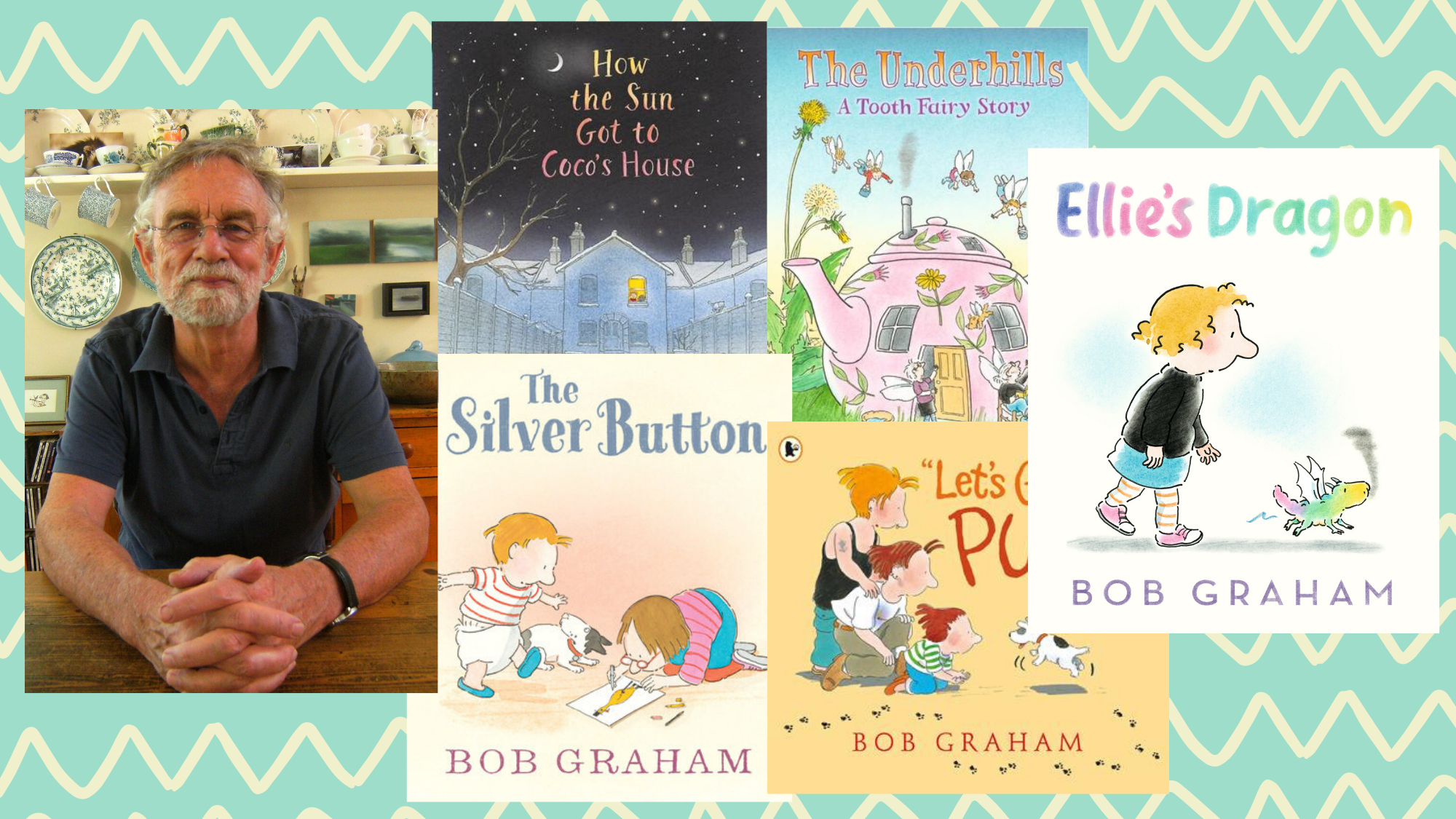
S: As you both write and illustrate most of your books, I was wondering, what comes first? The words or the pictures? Or is there something that ‘sparks’ these ideas?
BG: I have no set way of working, no system or template. Sometimes a word or two will beg a picture to accompany it – or sometimes the reverse. Only very rarely would I have a trajectory of a story when I am doing this. In fact the idea of sitting down to write a story I might find a little intimidating. More, I like to just push out from those first words and pictures and see where it leads me.
S: Your illustrations are so gentle and sweet, and for me they perfectly capture family life in all its ‘realness’: toys on the floor, dogs, etc. Is this intentional?
BG: I guess that my stories when they do arrive are found to have been hiding not very far from my desk. My surroundings, and back over time since our children were little, (along with all the muddle that goes with them) is a stage set waiting for characters. I cannot imagine a couch without a few dog hairs if you were to look closely. So the couch would invariably need a dog to occupy it, and in my own experience for a person to be a little short of room to sit down. Or might even have to sit on the floor.
I cannot imagine a couch without a few dog hairs if you were to look closely. So the couch would invariably need a dog to occupy it…
S: I am interested in how your books often seem to focus around very small, domestic ideas, like a trip home in the rain, a baby’s first steps or birthday, or helping an injured bird. What draws you to creating a story around these ordinary moments? And how do you manage to create something so engaging from these ‘small ideas’?
BG: Quiet and unobtrusive things, and people, interest me. I like to think that readers of my books need to do some work too, so I try to avoid hyperbole both in text and pictures. At times I rely on the readers, young and old to decide for themselves just what might be the expression on someone’s face for example. Everyone reads and sees in their own way.
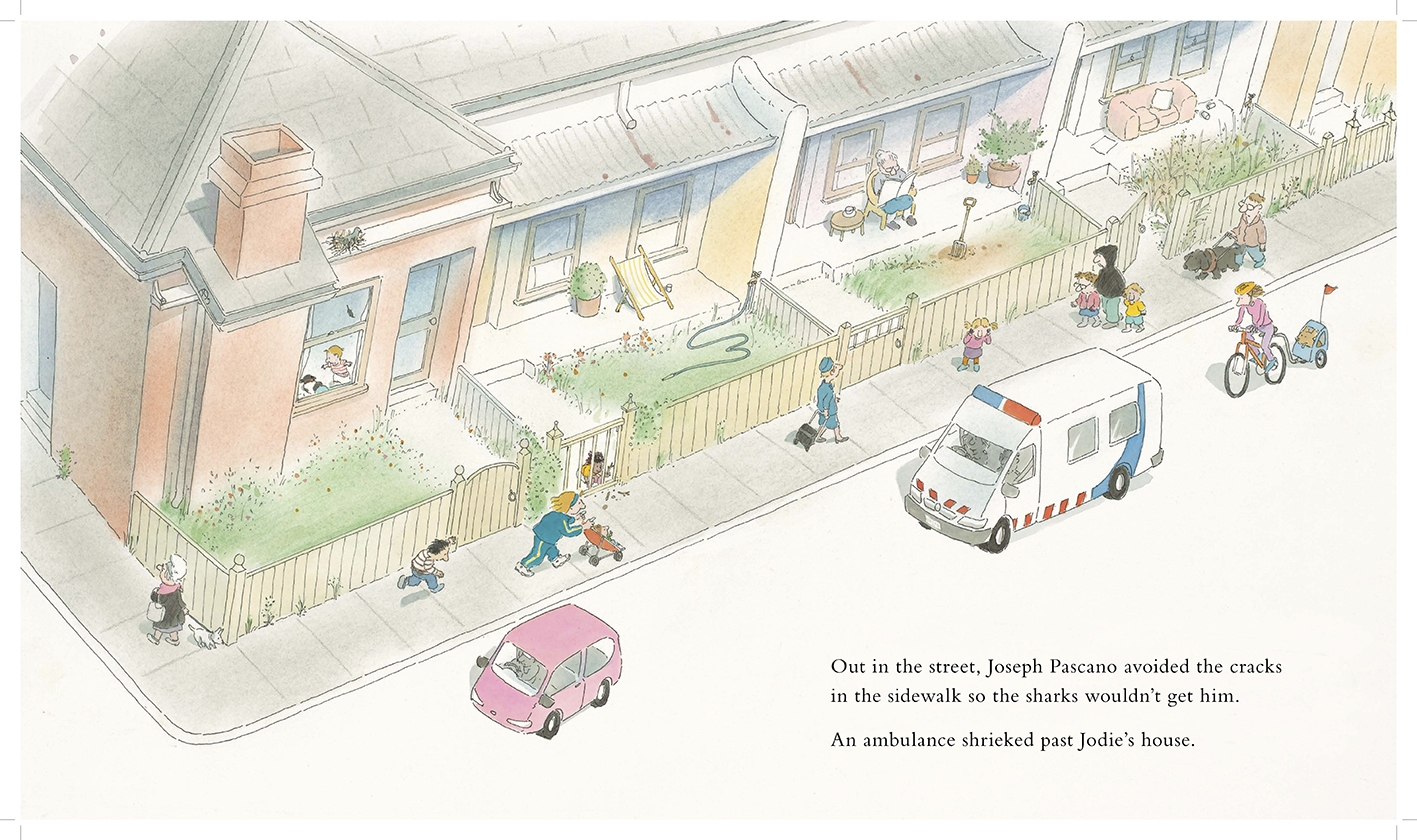
S: Your books also seem to touch gently, but pointedly on wider issues – a soldier and his mother saying goodbye in Silver Buttons, or how the sun highlights small family scenes across the world in How the Sun Got to Coco’s House, for example. This seems like a conscious effort to spotlight important issues – is it? And do you think it is important to have something to say about the world in general?
BG: I have been fortunate that I have received many lovely letters and reviews of my books over the years – but with Let’s Get a Pup, in America it attracted some controversy. A very few readers criticised dad’s earring, mum’s inking, even the fact that the parents briefly shared their bed with their daughter bouncing across it. I was accused by someone of having an “agenda.” My only agenda has ever been people being decent to each other, (and their dogs.) This covers a fair bit of territory and I would hope enters the land of kindness, tolerance and empathy.
My only agenda has ever been people being decent to each other, (and their dogs.) This covers a fair bit of territory and I would hope enters the land of kindness, tolerance and empathy.
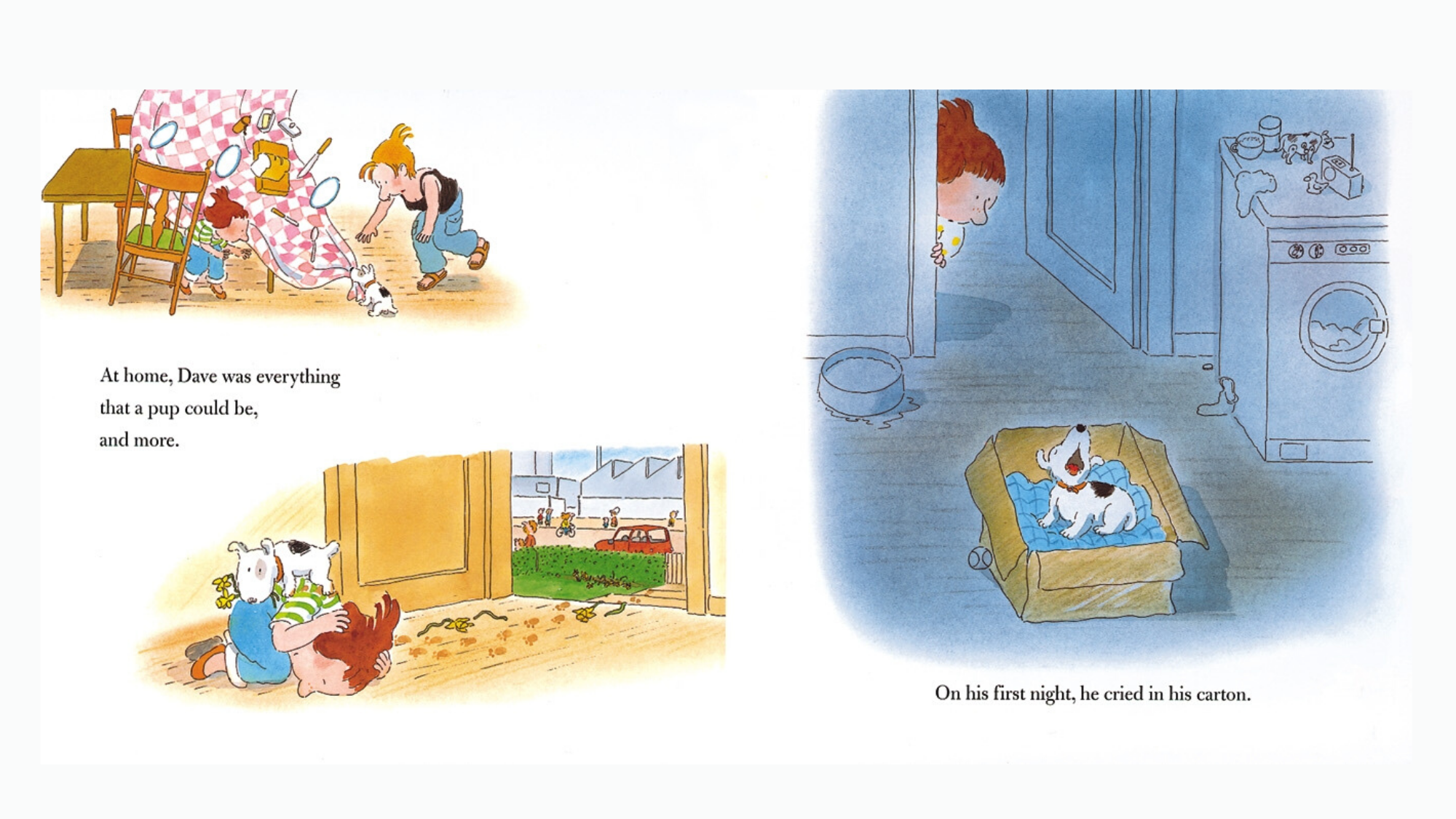
S: How do you make any message ‘age appropriate’ or is there such a thing as a topic being beyond a certain age group?
BG: Beyond knowing that I make picture books for young children I have little awareness of age groupings etc. I certainly could not tailor a story for a given age. I like to think that my books are shared and read by people at all stages of their lives, and that boundaries such as age are blurred. Although having said that I was once very interested to read in the news about a young boy in Kabul, who made an impossible daily journey to learn music in a bombed out music school there. But ultimately I said, “ do I want little kids to go to bed with the Taliban in their heads?” So I do still imagine young children reading picture books, and being read to before bed.
I like to think that my books are shared and read by people at all stages of their lives and that boundaries such as age are blurred.
S: I have noticed there are a few books where you seem to be in the illustrations, have you put anyone else you know in your scenes?
BG: Inevitably if I don’t go far from my desk then everything within reach and within memory will be drawn in.
S: And dogs? Your books also feature a lot of dogs, in the background and as the stars of the show, like Buffy and Let’s Get a Pup, do you model these dogs on any you know?
BG: Buffy came from a broken home. That’s all we knew about him when we rescued him from the Kilsyth Rescue centre. We subsequently took him from Australia over to the UK with us. He did his 6 month quarantine along with our Sasha and joined us in the country. I often wondered if his previous estranged owners knew he was walking down a country lane in Somerset UK. He sat down under my desk one day and told me the whole story of his life. So I just drew the pictures. Yes, there is an unbroken line of dogs in our family.
Buffy came from a broken home…He sat down under my desk one day and told me the whole story of his life. So I just drew the pictures.
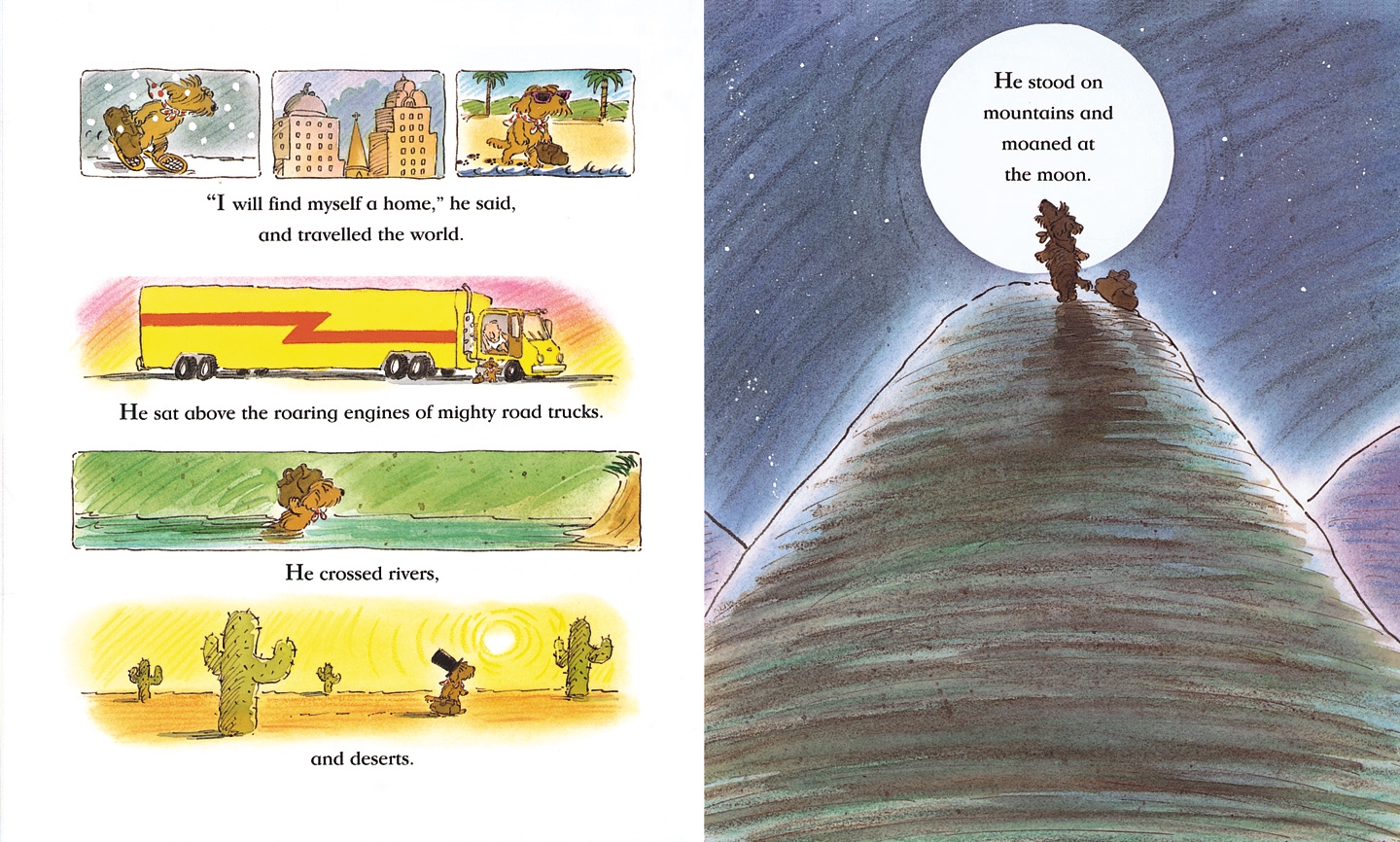
S: Your characters are very real, and I always appreciate the diversity you show within your books. It feels like something close to your heart – is this something you think about when illustrating and writing or do the characters just feel ‘right’ drawn a certain way?
BG: Thank you. They just present themselves, I just represent people all around me.
S: When do you know you have it ‘right’? I.e. your text or illustrations feel complete?
BG: I often don’t know I have it right. I am sometimes very unsure of myself, and after working on a book for 6 months have a very subjective view of it. Thankfully, my wife smiling as she reads a draft is an essential indicator along with my privilege of working with top editors who can be (happily) more objective than me.
I often don’t know I have it right. I am sometimes very unsure of myself…Thankfully, my wife smiling as she reads a draft is an essential indicator…
S: Do you have any books of your own that have a special place in your heart?
BG: My first book Pete and Roland, in 1981 resulted from my being home from work, a budgerigar flying in over the fence and living with us for a while. I started on that book on the kitchen table, only because it was a good idea at the time. Nearly 40 years on nothing has changed, except for our son Pete who hugs me like a big bear.
S: What do you think a good picture book needs to speak to people and to stand the test of time?
BG: I imagine a good picture book like any other book varies with the eyes and experience of its readers. Some people need to see themselves, or something of home I suspect. But I think that books can provide a window into walking in another’s shoes, however briefly.
Some people need to see themselves, something of home I suspect. But I think that books can provide a window into walking in another’s shoes, however briefly.
S: Who are your favourite illustrators/inspirations and was there anyone you looked to as a child or as an adult?
BG: As a small boy I loved a Sydney newspaper cartoonist, Emile Mercier and copied his cartoons every day, kneeling on the living room floor. The highlight of my life was when he signed his annual Christmas book for me in a bookshop in Sydney. I was lost for words.
S: What was it like starting out? Did you always have an eye to illustrating books for kids or was this something that came out of other things? And for those starting out, who love to write or illustrate, do you have any sage words of advice?
BG: While making those cartoons on the floor as a young child I could never have envisaged that someday I would be doing what I do. I made Pete and Roland, with no other purpose in mind other than it was a good idea at the time. I just loved doing it, and I still do. No forward or career planning was involved. Still isn’t! If you love doing something then I hope you will be fortunate enough to just do it, and to do it to the best you can!
If you love doing something then I hope you will be fortunate enough to just do it, and to do it to the best you can!
S: Finally, I’d love you to tell us about your latest book, Ellie’s Dragon and the inspiration behind it, what you enjoyed about creating it.
BG: I have now had the privilege of watching our Naomi and Peter grow into their 50s. Naomi is a social worker and musician and Pete is an artist. Their dragons are still very much alive and I am sure they revisit them on a regular basis.
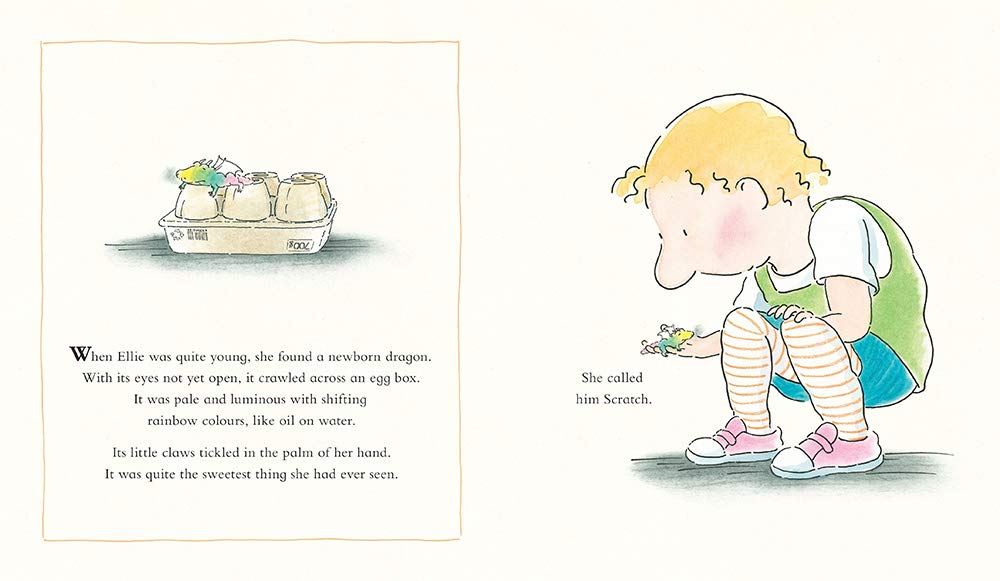
Simie Simpson
Simie Simpson (Te Ati Awa) has worked in the New Zealand book industry for almost two decades, as a librarian, a sales manager for Walker Books New Zealand and a bookseller. She is the programmes manager for Read NZ Te Pou Muramura.



